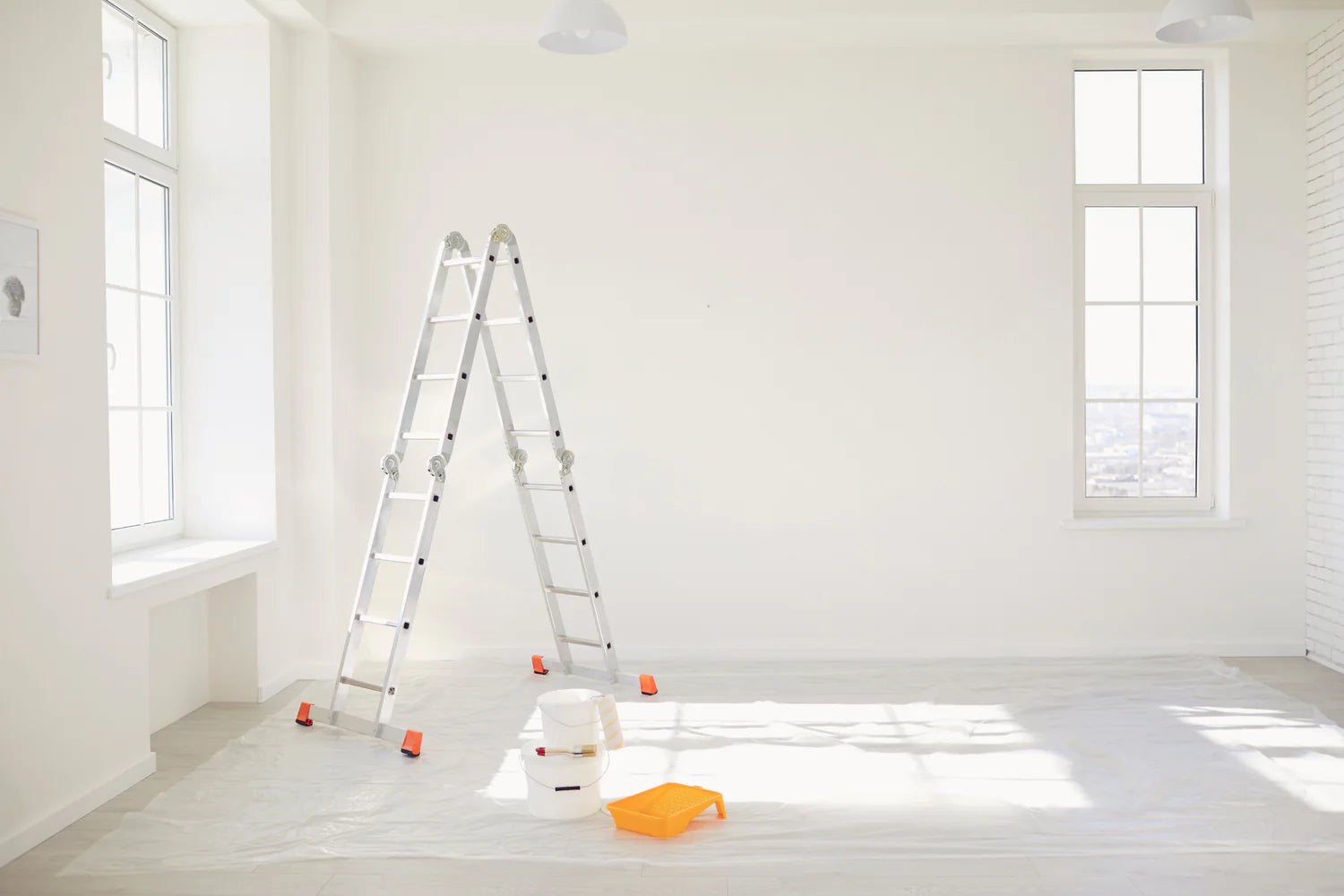Full House Renovation
An easy-to-install solution that maximises wall space and avoids the disruption of alternative heating options.
One of the most crucial decisions you'll make during a full house renovation or self-build will be selecting a heating system that is well-suited to you and your needs. This will not only affect your experience living inside the house but will also influence the running costs of your home.
Infrared heating is one of the most cost-effective and energy-efficient heating solutions on the market. Installation is simple and much less disruptive and expensive than the installation of wet systems, underfloor heating or heat pumps. Electric underfloor heating is also a popular choice for the home renovation market. However, it is expensive to install and run and provides a maintenance challenge in terms of access under floor coverings.
The modern look of white panel infrared heaters can become part of your design vision, providing an aesthetically pleasing clean, simple feel. Or they can be customised to fit any style or décor, with the custom image or mirror option.
The heaters can be installed high up on walls or ceilings, so they do not become obstacles to furniture like traditional radiators often are.
With a full house renovation, there is no waiting for plumbing systems to be installed or updated throughout the whole property or waiting for specialist contractors. Infrared heaters are quick and simple to install.
If you are renovating an older property, where damp can be an issue, infrared is a perfect (and healthy) heating choice. Because they heat objects rather than the air, infrared heaters are great at reducing damp.
How Many Infrared Heaters do I Need for a Whole House?
Each house is different, so if you are looking for infrared heaters for a complete house renovation, a design consultation will be required.
Many aspects must be taken into account, such as the size of the property, the insulation type, window type, floor materials etc.
In order to ensure that the size and wattage of heaters will give you the best heating for the property, as well as fit into your design vision, we will carry out a design consultation and suggest the best and most effective system for you.
Advantages of having an Infrared Heating System:
1. Have full control of Heating systems at all times
At Kiasa, we offer our customers WiFi-controlled panels with a built-in thermostat, so you can have full control of the heating just from the touch of your phone. With this, you can have instant access to your heaters from anywhere. You can create your own weekly schedules by selecting which days and at what times you would like the heater to run and selecting a target temperature for each room. This allows our customers to control heating for every room individually. Our WiFi-controlled panels are perfect for busy individuals who want to come home and unwind in a warm snug environment.
2. Reduce Energy Consumption
The main advantage of infrared heating is that, unlike conventional central heating systems, infrared heaters offer you the option to heat rooms inside your house individually, rather than heating your whole house which is unsustainable and not cost-effective. For example, if you and your family are spending the evening in your living room instead of heating your whole house with central heating and wasting energy, you could use an infrared heater inside your living room to keep you cosy. You can find out more about the benefits of Infrared Heating here.
3. Target Heating
Infrared heaters are perfect for being utilized as a focused heating solution for specific areas. Infrared heat is a consistent heat that directly warms objects and individuals instead of the surrounding air to help create a healthy environment. The infrared rays flow through the air and heat individuals or objects that come into touch with it, providing an even, radiant warmth (similar to the sun), but at a lower air temperature, which is perfect for target heating. Whereas radiators use convection to heat the air inside a room and then the heated air rises and escapes a room, resulting in having to keep the radiator on for longer.
4. Low Installation costs
Infrared heating has lower installation costs compared to other heating systems. For example, if a room is 3m x 4m = 12 sqm, we would recommend that based on a national average for living space of 80w per sq metre, this room would require a 960W panel. For any movable space (e.g. bedroom, kitchen, hallway etc) we would multiply the square metre of the room by 50w to 70w.
The typical cost and installation of a double panel radiator is £140 to £240. At Kiasa, our 960W Infrared Heating Panel is priced at £236.73 and has zero installation costs. With an infrared heating system, you won’t need to fit a boiler which costs between £500 to £2,500 or worry about repairs, servicing, or carbon monoxide leaks.
5. Instant Heat
Infrared heaters warm up quickly, providing you with heat instantly within just a few minutes. The heat produced by infrared heaters reaches temperatures rapidly, reducing warm-up periods and conserving energy. Compare this to traditional boiler heaters that can take around 30 minutes to heat up, the shorter warm-up time of infrared heaters saves you money in the long run!
6. Creates a Healthy Environment
Prevents damp and mould - Radiation heat produced from Infrared Heaters penetrates through walls which warms the walls up and absorbs the heat. This prevents moisture from settling in.
Reduces dust allergy - Infrared Heaters do not collect dust, unlike central heating systems. Central heating systems use convection to transfer heat around the room, during this process dust particles that are collected by radiators also transfer around the room.
Improves air quality - It improves air quality inside your home as IR heaters do not affect the humidity inside the room thus no dry air is formed.
7. No maintenance & servicing costs
Infrared heaters have little to no maintenance costs and zero servicing costs as they are made from durable aluminium and only rely on a socket to function. In contrast, convection heaters rely on boilers, which are anticipated to degrade quickly which is why it is common to find boilers that are 5 years older to only be working at 85% efficiency, which will gradually decrease further over the years. On top of this, the maintenance costs of replacing or fixing a boiler can be high. The cost of replacing a boiler on average can be between £500-£2,500 and repairing a boiler can cost £150 for a minor repair up to £400 for more serious faults. This can cause a hefty strain on some of our bank accounts. Find out more about how cost-effective infrared heating is.



